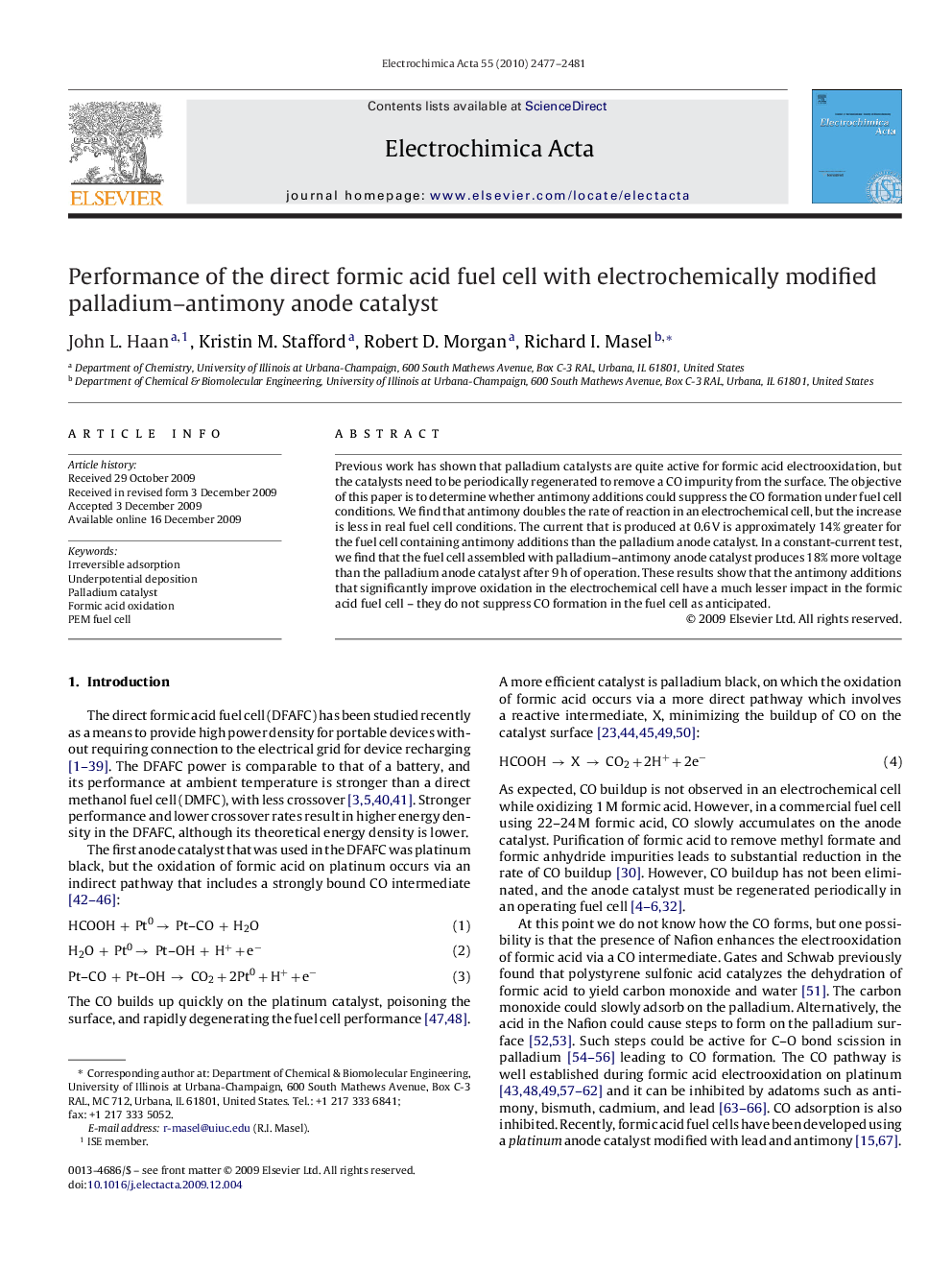| Article ID | Journal | Published Year | Pages | File Type |
|---|---|---|---|---|
| 191886 | Electrochimica Acta | 2010 | 5 Pages |
Previous work has shown that palladium catalysts are quite active for formic acid electrooxidation, but the catalysts need to be periodically regenerated to remove a CO impurity from the surface. The objective of this paper is to determine whether antimony additions could suppress the CO formation under fuel cell conditions. We find that antimony doubles the rate of reaction in an electrochemical cell, but the increase is less in real fuel cell conditions. The current that is produced at 0.6 V is approximately 14% greater for the fuel cell containing antimony additions than the palladium anode catalyst. In a constant-current test, we find that the fuel cell assembled with palladium–antimony anode catalyst produces 18% more voltage than the palladium anode catalyst after 9 h of operation. These results show that the antimony additions that significantly improve oxidation in the electrochemical cell have a much lesser impact in the formic acid fuel cell – they do not suppress CO formation in the fuel cell as anticipated.
